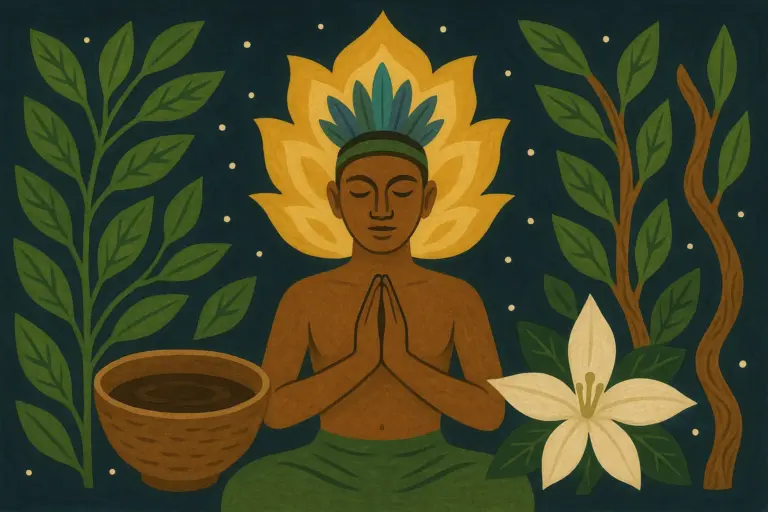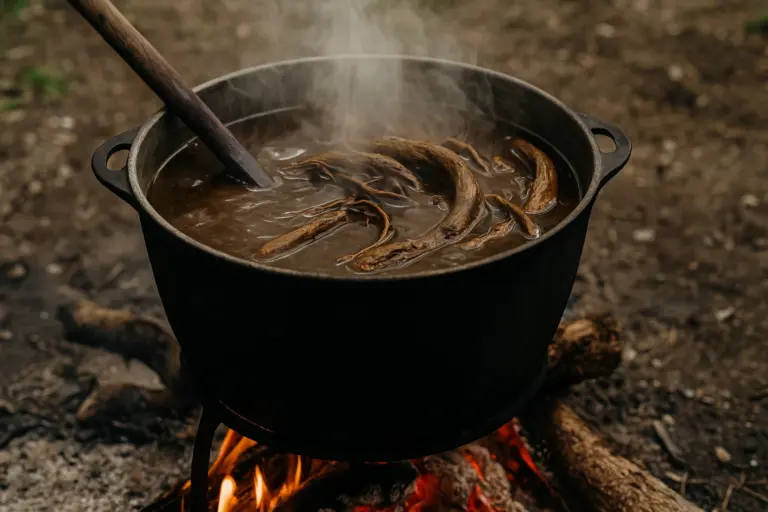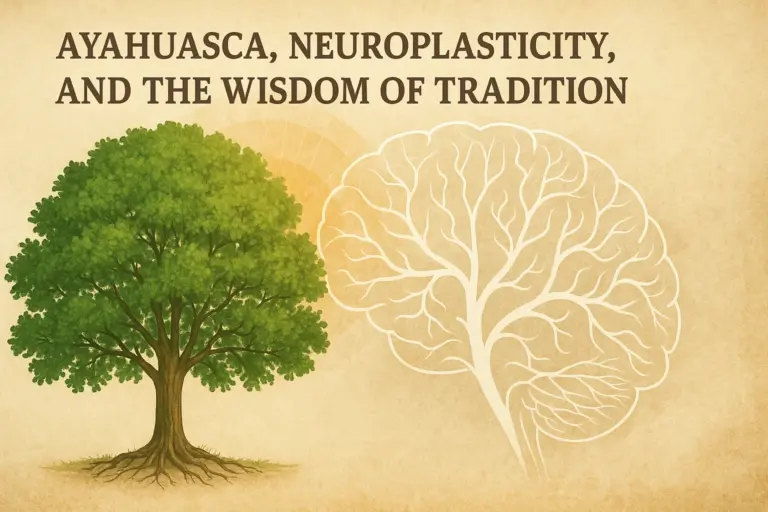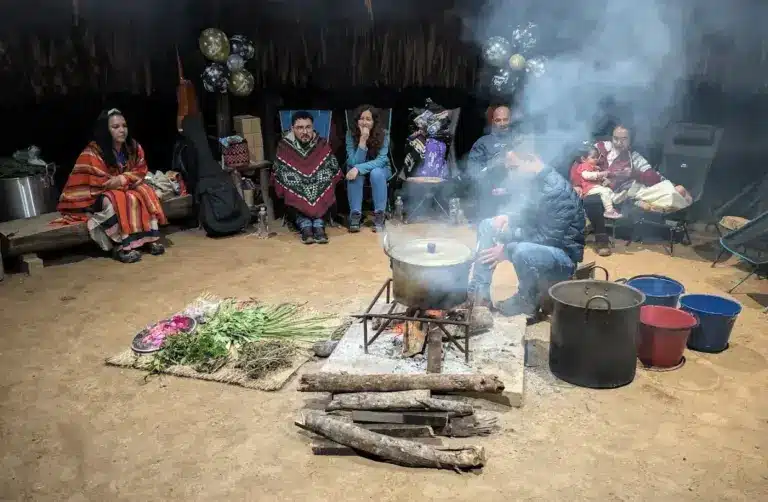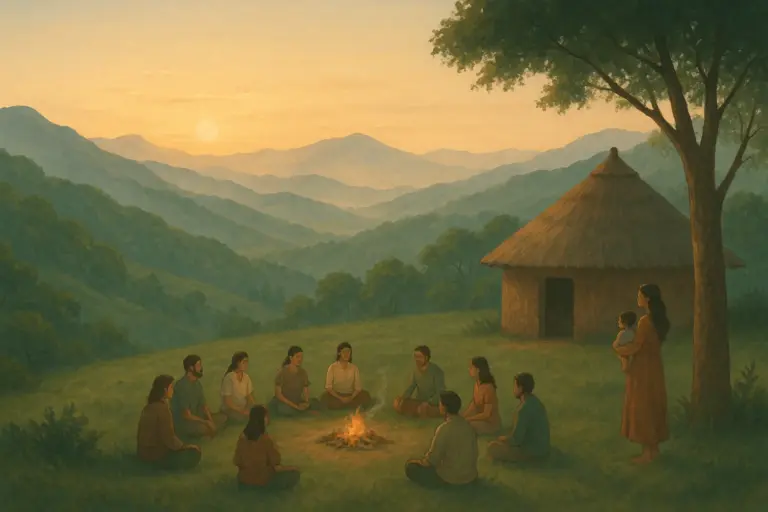What is the Meaning of Ayahuasca? A Clear Guide to Its Origins and Purpose
People who first encounter the medicine often wonder: what is the meaning of ayahuasca? Is it simply a plant? A psychedelic brew? A spiritual ceremony? Or something deeper — a pathway toward healing and self-discovery?
The word itself comes from the Quechua language, spoken across the Andes and Amazon:
“aya” = spirit, soul, or ancestor
“huasca” = vine or rope
Together, ayahuasca is most often translated as “the vine of the soul” — a phrase that reflects its role as a bridge between the physical and spiritual realms. But this definition only scratches the surface. The meaning of ayahuasca unfolds in layers: linguistic, cultural, symbolic, and deeply personal.
Table of Contents
The Word Itself — Roots Across Cultures
The term ayahuasca reflects the profound respect Amazonian peoples hold for this sacred medicine. In Quechua, aya includes not just “spirit,” but also “ancestor.” Huasca means “vine” or “cord,” suggesting both the physical plant and the metaphysical connection it creates.
- Colombia & Ecuador: More commonly called yagé (yah-HEY).
- Brazil: Known as hoasca or daime in spiritual movements.
- Peru: Sometimes called oni or nixi pae by the Shipibo.
The Cultural Meaning of Ayahuasca
Ayahuasca is not just a drink but the centerpiece of rich healing traditions that have evolved for millennia.
One participant shared: “Unlike a vast number of other organisations, what you get is not a commercialized experience. You receive a traditional, caring and holistic weekend that is utterly transformative in all dimensions.”
A Medicine Born from the Forest
Indigenous healers, known as curanderos or ayahuasqueros, describe ayahuasca as a plant teacher. Through dreams, visions, and apprenticeships, they learned how to combine the Banisteriopsis caapi vine with plants like Psychotria viridis (chacruna) or Diplopterys cabrerana (yagé).
Sacred Preparation
The brew is made with prayer, songs (icaros), and intention. The process itself is a ritual, carrying spiritual meaning beyond chemistry. To learn more about how the medicine is prepared and what ayahuasca is you can read our article here.
Traditions Across Cultures
- Shipibo (Peru): Geometric art (kené) said to come from ayahuasca visions.
- Siona & Cofán (Colombia/Ecuador): Ceremonies emphasize cosmic balance and community.
- Huni Kuin (Brazil): Use music and ritual to direct the medicine’s effects.
Symbolic and Spiritual Meaning — The Vine of the Soul
Ayahuasca is often called a plant teacher — not a drug, but a conscious ally that offers lessons and healing.
Teacher and Guide
Participants often describe direct teachings:
- Insights into relationships and life choices
- Encounters with ancestral or spiritual presence
- Release of emotional burdens
As one retreat participant explained: “The ceremonies were authentic as it gets — sacred circle, real musicians, and full safety. I received so much.”
Science and Spirit
Modern research shows ayahuasca affects brain networks related to self-identity, which may help explain experiences of interconnectedness. Yet reducing its meaning to chemistry alone misses the deeper truth: many report healing, clarity, and connection that lasts long after ceremonies.
Healing Dimensions
- Physical: Purging as cleansing, release of toxins.
- Emotional: Processing grief, trauma, and old wounds.
- Mental: Relief from depression, anxiety, PTSD.
- Spiritual: Connection to the sacred and to life’s deeper meaning.
“The real ceremony is not the night you drink; the real ceremony is the life you live afterward.”
Personal Meaning — Stories of Transformation
- Healing grief: “After the loss of my sister, ayahuasca gave me closure and connection. This community has become like family.”
- Trauma recovery: “Over 80% of my PTSD symptoms disappeared after just two ceremonies. They took very good care of me the entire time.”
- Creative inspiration: “One of the greatest things about Camino al Sol is the music… musical medicine! It cleanses, renews, and inspires me.”
- Trust & safety: “Each experience was unique, sacred, and very safe. My gratitude runneth over.”
Safety, Preparation, and Responsible Approach
Safety comes from three pillars: set (mindset & preparation), setting (sacred, well-held space), and guidance (experienced facilitators).
Contraindications: Certain medications (e.g., antidepressants), heart conditions, or mental health disorders can make ayahuasca unsafe. Responsible retreats will screen carefully.
Integration
Integration — applying insights into daily life — is where the true meaning takes root. Supportive practices include journaling, therapy, meditation, and community sharing.
“The ceremony showed me so clearly what needed to change in my life, but actually making those changes has been the hardest part.”
FAQs on the Meaning of Ayahuasca
Finding Your Own Meaning
The meaning of ayahuasca cannot be given by others — it must be discovered personally. Preparation, respect, and guidance are essential. Most importantly, integration is where the true transformation happens.
Learn more about joining an authentic ayahuasca retreat in Colombia with Camino al Sol, where tradition, safety, and respect guide every step.


